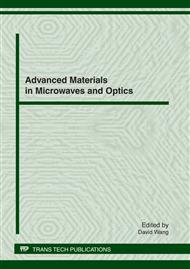p.90
p.94
p.98
p.104
p.108
p.114
p.118
p.123
p.130
Response Function Test of Marine γ-Spectrometry with Different Detector Material
Abstract:
The marine radioactivity measurement is the low-level radiation measurement, whose accuracy mainly depends on the material and design of the detector. However, the currently research results mainly focus on the qualitative research. In this paper, a Monte Carlo code MCNP was utilized to simulate the comparation of the energy spectra of several relevant γ rays recorded by detectors immersed in seawater, The detection efficiency and the effective detection distance of these detectors to the radionuclides of 137Cs dispersed in seawater were calculated.The results of our experiment shown that the effective detection distance of these detctors to γ radionuclides depends on the detector material and γ-ray energy. The LaBr detector has the best price performance ratio, however, considering the balance between the low-cost and highly detection efficiency, the NaI detector is also a better choice.
Info:
Periodical:
Pages:
108-113
Citation:
Online since:
January 2012
Authors:
Price:
Сopyright:
© 2012 Trans Tech Publications Ltd. All Rights Reserved
Share:
Citation:


